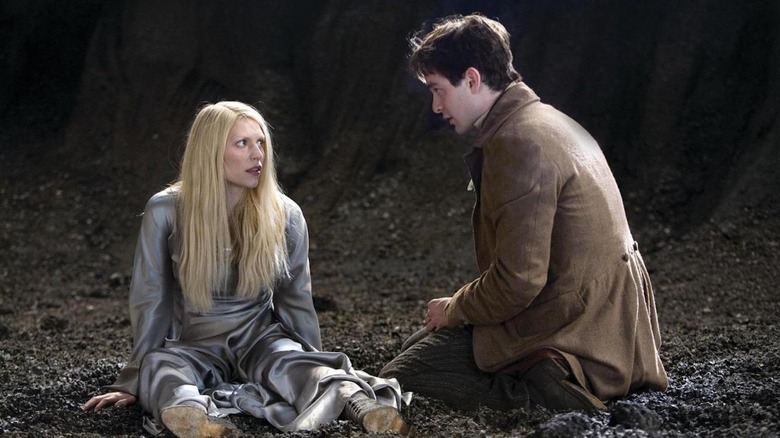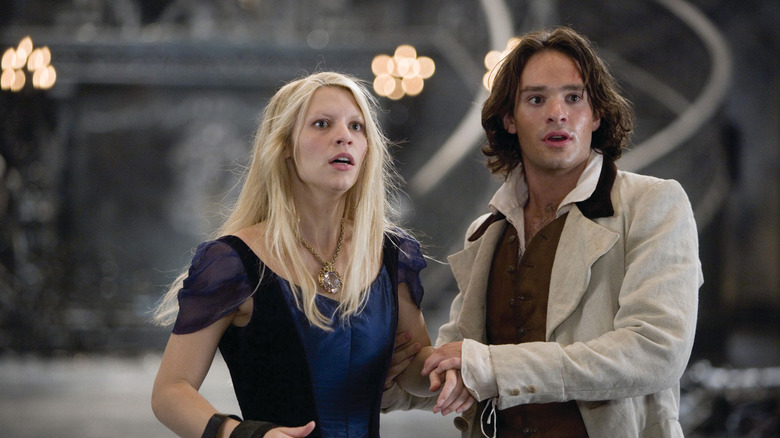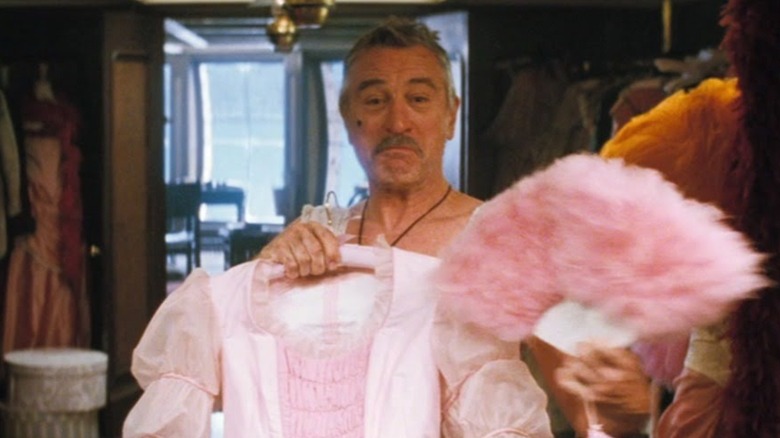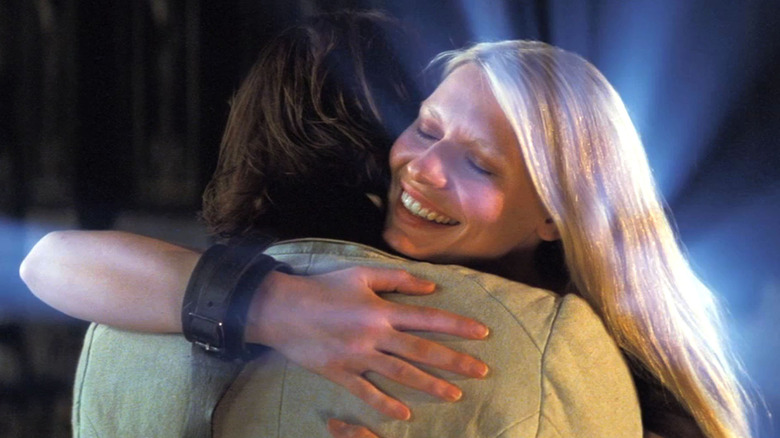
A lad. A lass. Spells. Swords. Then, brotherly ghosts, goat man, pirate in drag, and breasts that could sag! These are the sights to see in the lovable and shiny "Stardust," Matthew Vaughn and company's adaptation of Neil Gailman's 1999 novel.
When the film came to Vietnamese theaters, which wouldn't be until Christmas of 2007 was a week out, I had already had experience with "fairy tales that won't behave." Prior to the chase for Yvaine, the fallen star (Claire Danes) — who was hunted by ruthless princes (among them, Mark Strong), aging witches (one of them, Michelle Pfeiffer) and lovestruck village boy Tristan (Charlie Cox) — there was "Shrek" and "Ella Enchanted." "Shrek" poked at contemporary pop culture with its "Matrix"-inspired a fight, "Shrek 2" took aim at capitalism with its own spin on Starbucks, and "Ella Enchanted" gave a medieval version Teen Vogue. But "Ánh Sao Ma Thuật," as "Stardust" was titled in Vietnam, rose above the rest.
The ways it would go against traditions in some of its spins guaranteed that every subsequent watch will be the first one, made on the pointedly gray afternoon of December 16 at Đống Đa Cinema.
Misbehaving Fairy Tales

My positive reaction made me one of the kids which this film was "strictly for" in Variety's review, and if not that then one of those "6-year-olds and fantasy nerds" mentioned in The Spectator's. But being 14, I didn't fit any of that supposed target crowd. Against those reviews — which in retrospect contained possible notes of condescension in them — it felt like I might be losing it. Was I? Especially when, going on 30 now, I see "Stardust" as more than a fantasy adventure that my adolescent self found to be a "phim hay"?
In retrospect, "Stardust" knew how to grow with the viewer (at least to this Vietnamese person) because its links to current times were different than most. Writers Jane Goldman and Vaughn himself brought and embedded modern elements into ye olde landscape, and that was a contrast to the more obvious (if then-trendy) route of turning classical things into the fish out of water. The modernizations themselves also paid no concern with items du jour or references to catch; they just were in the world, about as natural as the sun and the moon. Therefore, gags such as seeing Lamia (Pfeiffer) using the ring to call her sisters, or realizing the carriage of the oldest prince, Primus (Jason Flemyng), was a Hummer but horse-drawn, stayed effective (if not so meme-ready, right "Shrek?"). The dialogue, or specifically its concise mindfulness of operating within the blockbuster sphere, was also immune to time as it was neither period-florid nor Netflix's "Persuasion"-new. Of course, "The Princess Bride" did all of this first. In fact, Rob Reiner's film and "Midnight Run" even inspired Vaughn's vision.
Dancing Past Censorship

The film was also an eye-opener on another front: It was shown in Vietnam without any cuts. Even when it had dark magic, grown humor, and non-heteronormativity — the latter depicted through Captain Shakespeare (Robert De Niro), whose archetypal masculinity is a guise. Even when it was lighter and leaner than its source material. It would puzzle me why the censorship board let "Stardust" pass unscathed, until the answer that was right in front of my eyes surfaced: the message.
The narrative wasn't complicated, nor did it want to be, and the result was a hyper-clear kind of messaging about what was fair and what was wicked. At the end of the day, fairness had prevailed, and wickedness was vanquished. In a sense, it was the hand in the glove of the country's eons-long embrace of Confucian values rich in "this is the and only way"-isms. Either that or the tenets of "chân, thiện, mỹ" (truth, goodness and beauty) collectively acting as deviation deterrent. Perhaps to the censors, those Anglo-minded brushes were just embellishments on, and not the essence of, the material. I think they were just like male actors playing female characters (and vice versa) or the deliberate anachronisms in the riff-on-fairy tales "Ngày xửa... ngày xưa" plays that I once adored. To illustrate: The "Ngày xửa... ngày xưa" 2000 debut of "Tấm Cám," also known as the Vietnamese version of "Cinderella," had a moment when the evil stepsister Cám (Thành Lộc) and stepmother (Hữu Châu) attempted to catch the protagonist's pet goby by dancing in less-than-traditional moves (a couple of which, unfortunately, evoked stereotypical Native American imagery).
More Than A Bedtime Story

And this was likely where "Stardust" quote-unquote ended for the aforementioned reviewers. It made a kid smile, it bore the neatness of a bedtime story, fin. That might be true and also not, for I did say the film would change as my eyes age. For this year, I find that, as much as the film is unabashedly about true love, it's also about genuine acceptance. The characters practicing it would know of sharing over taking and, more importantly, would learn how to be fearless at being true.
I feel like every aspect of "Stardust" has always embodied that magic, which in these chaotic times is enough to momentarily turn burdens into feathers. More than that, it gives me an all-access pass to again feel like a kid, the version that once believed he could light up the sky and rule the world.
Only quality tales can do that.
Read this next: 13 Fantasy Films That Never Got Sequels
The post It Shines, Still: On Its 15th Anniversary, Stardust Still Carries That Secret Magic appeared first on /Film.
0 Comments